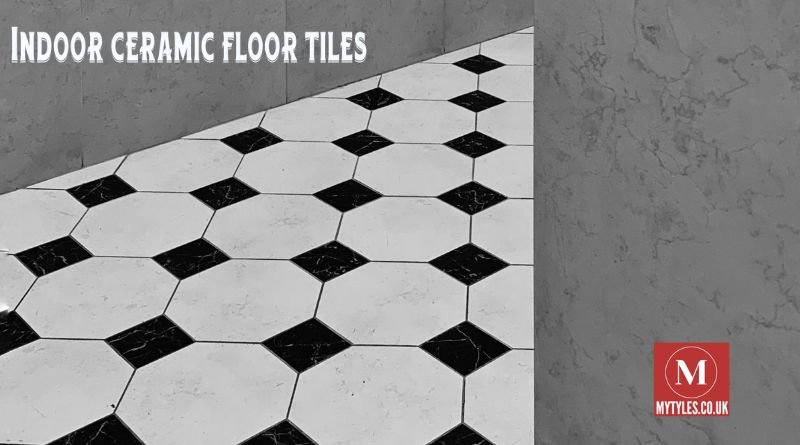Ceramic tiles have been a popular choice for flooring due to their versatility, durability, and aesthetic appeal. Among the various types of tiles available, indoor ceramic floor tiles stand out for their unique characteristics that make them suitable for residential and commercial spaces alike. This article delves into the various aspects of indoor ceramic floor tiles, including their benefits, types, installation process, maintenance tips, and design considerations, ultimately providing a comprehensive understanding of why they are an excellent choice for any indoor space.
Understanding Indoor Ceramic Floor Tiles
Indoor ceramic floor tiles are made from clay and other natural materials that are shaped, dried, and then fired at high temperatures. This process results in a robust and long-lasting flooring solution that can withstand the wear and tear of everyday use. Ceramic tiles come in various sizes, colors, patterns, and finishes, allowing homeowners and designers to create unique and stylish interiors.
One of the defining features of indoor ceramic floor tiles is their low porosity, which means they are resistant to moisture and stains. This quality makes them an ideal choice for areas prone to spills, such as kitchens and bathrooms. Additionally, ceramic tiles are easy to clean, requiring only a damp mop or a mild cleaning solution to maintain their appearance.
Advantages of Indoor Ceramic Floor Tiles
Durability and Longevity
One of the primary advantages of indoor ceramic floor tiles is their durability. Unlike other flooring materials, such as wood or carpet, ceramic tiles do not warp, fade, or become damaged easily over time. They are resistant to scratches, dents, and stains, making them ideal for high-traffic areas. With proper installation and maintenance, ceramic tiles can last for decades, making them a cost-effective flooring option in the long run.
Aesthetic Versatility
Indoor ceramic floor tiles offer a wide range of aesthetic options. Available in numerous colors, patterns, and finishes, these tiles can complement various design styles, from traditional to contemporary. Homeowners can choose from glossy, matte, textured, or patterned tiles to create the desired ambiance in their spaces. The ability to mix and match different tiles allows for creative designs that can enhance the overall look of a room.
Easy Maintenance
Maintaining indoor ceramic floor tiles is relatively straightforward. They are resistant to dirt and dust, and regular cleaning usually involves sweeping and mopping. Unlike carpets, which can harbor allergens, ceramic tiles are hypoallergenic and do not absorb dust or odors, contributing to a healthier indoor environment. For more stubborn stains, a gentle cleanser or tile cleaner can be used without damaging the tile’s surface.
Environmental Sustainability
Ceramic tiles are an eco-friendly flooring option, as they are made from natural materials. Many manufacturers prioritize sustainable practices in the production of ceramic tiles, using recycled materials and minimizing waste. Additionally, ceramic tiles contribute to energy efficiency in homes, as they can help regulate indoor temperatures, keeping spaces cooler in the summer and warmer in the winter.
Fire Resistance
Another notable benefit of indoor ceramic floor tiles is their fire resistance. Unlike wood or laminate flooring, ceramic tiles will not burn or release harmful fumes in the event of a fire. This quality makes them a safe choice for residential and commercial spaces, providing an extra layer of security for homeowners and occupants.
Types of Indoor Ceramic Floor Tiles
Glazed Ceramic Tiles
Glazed ceramic tiles are coated with a glass-like finish that enhances their durability and aesthetic appeal. This glaze not only adds color and pattern but also provides a protective layer that makes the tiles more resistant to stains and moisture. Glazed tiles are commonly used in kitchens and bathrooms due to their waterproof nature and ease of cleaning.
Unglazed Ceramic Tiles
Unglazed ceramic tiles have a more natural, earthy appearance as they lack the glossy coating found in glazed tiles. These tiles are typically more porous, which means they may require sealing to protect against stains and moisture. Unglazed ceramic tiles are often used in areas where a rustic or traditional look is desired, such as entryways and living rooms.
Porcelain Tiles
Porcelain tiles are a subtype of ceramic tiles that are made from finer clay and fired at higher temperatures. This manufacturing process results in a denser, more durable product that is even more resistant to moisture and stains. Porcelain tiles can mimic the appearance of natural stone or wood, making them a popular choice for homeowners seeking the look of these materials without the associated maintenance.
Specialty Tiles
In addition to standard ceramic tiles, there are various specialty options available, including mosaic tiles and large-format tiles. Mosaic tiles consist of small pieces arranged in intricate patterns, offering a unique design element. Large-format tiles, on the other hand, create a seamless appearance and can help make smaller spaces feel larger. Both options can enhance the visual appeal of any room.
Installation Process
Preparing the Subfloor
Before installing indoor ceramic floor tiles, it is essential to prepare the subfloor. The surface must be clean, dry, and level to ensure proper adhesion. Any existing flooring may need to be removed, and any cracks or imperfections should be repaired.
Planning the Layout
Planning the layout is a crucial step in the installation process. It is advisable to start from the center of the room and work outward to ensure a balanced look. Measuring the space and marking reference lines can help achieve a uniform pattern.
Applying Adhesive
Once the layout is planned, adhesive can be applied to the subfloor. Using a notched trowel, spread the adhesive evenly, covering a manageable section to prevent it from drying before the tiles are placed.
Installing the Tiles
Begin placing the tiles at the marked reference lines, pressing them firmly into the adhesive. Spacers can be used between tiles to maintain consistent grout lines. It is important to periodically check for levelness and adjust tiles as necessary.
Grouting and Sealing
After the tiles are set and the adhesive has cured, the next step is to apply grout. Grout fills the spaces between the tiles and provides stability. Once the grout is applied, it may need to be sealed to protect against moisture and stains, especially in areas like kitchens and bathrooms.
Maintenance Tips
Regular Cleaning
To keep indoor ceramic floor tiles looking their best, regular cleaning is essential. Sweeping or vacuuming removes dirt and debris, while mopping with a mild cleaning solution helps maintain shine. Avoid using abrasive cleaners that can scratch the tile surface.
Addressing Stains
For stains that resist regular cleaning, a dedicated tile cleaner can be used. It is important to test any cleaning solution in a small, inconspicuous area before applying it to the entire surface.
Inspecting Grout
The grout between tiles should be inspected periodically for cracks or discoloration. If any issues are noticed, regrouting or sealing may be necessary to prevent moisture from penetrating and causing damage.
Protecting Against Damage
To prevent scratches or damage to the tiles, consider using area rugs in high-traffic areas and using felt pads under furniture legs. Avoid dragging heavy objects across the floor, as this can cause scratches or chips in the tile.
Design Considerations
Color and Pattern Selection
When choosing indoor ceramic floor tiles, the color and pattern should complement the overall design of the space. Lighter colors can create an illusion of a larger area, while darker hues can add warmth and coziness. Patterns, whether subtle or bold, can serve as focal points in the room.
Combining Tiles
Combining different types of ceramic tiles can create visual interest and depth. For example, using a combination of large-format tiles with smaller mosaic accents can add texture and character to a space.
Coordinating with Decor
Finally, coordinating ceramic tiles with existing decor is essential for a cohesive look. Consider the color palette of the walls, furniture, and accessories to ensure that the flooring harmonizes with the overall design scheme.
Conclusion
Indoor ceramic floor tiles are an excellent flooring choice for both residential and commercial spaces. Their durability, aesthetic versatility, and ease of maintenance make them suitable for various applications. With numerous types available and a range of design options, homeowners can create beautiful and functional spaces that meet their needs and preferences. By understanding the advantages, types, installation process, maintenance tips, and design considerations associated with indoor ceramic floor tiles, individuals can make informed decisions when selecting the perfect flooring solution for their interiors.
Indoor ceramic floor tiles not only enhance the beauty of a space but also contribute to a practical and sustainable lifestyle. Whether you are renovating your home or building a new one, these tiles offer a timeless flooring solution that can withstand the test of time, ensuring satisfaction for years to come.




